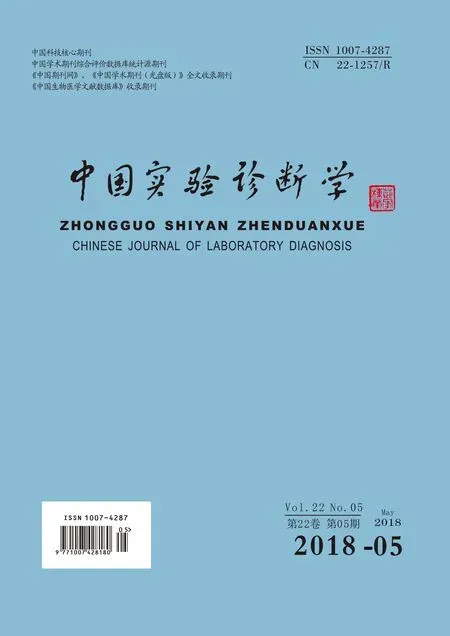功能因素对正畸长期稳定性影响的相关研究进展
于 航,胡 敏,张 祎,王六一,刘 楠,冯 旭
(吉林大学口腔医学院 口腔正畸科,吉林 长春130041)

1 咬合

1.1 前牙前导运动

1.2 咬合干扰

2 TMJ与正畸稳定性
颅颌面系统是一个整体,只有各部分协调统一,整个系统才能最好的行使功能,咀嚼肌和髁突作为下颌行使运动时不可或缺的部分,当发生功能障碍时,将会影响口颌系统的平衡,但目前关于咀嚼肌及髁突位置与TMD的相关性尚存争议。
2.1 咀嚼肌
咀嚼运动是由中枢神经诱发,外周神经根据食物质地、形状及咬合稳定性等影响因素而调节的肌肉节律性收缩形成的下颌运动。正畸治疗产生的咬合重建,是需要口颌系统神经肌肉平衡来实现的,但对于这点往往没有给予足够的重视。临床中,我们常常可以观察到,当咬合关系改变后,咀嚼肌的垂直距离也会发生改变[15,16]。当咀嚼肌的垂直距离改变后,初始的肌纤维的长度也发生永久性改变,进而导致肌张力降低[17,18]。有学者对大鼠进行咬合干扰实验,发现单侧咬合干扰会引起双侧咀嚼肌发生病理性变化[19]。但这种动物实验所造成的干扰都是急性的,并不能完全与临床相符。另一方面也有研究发现,当颞下颌关节和上下颌间运动发生功能障碍时,口颌肌肉将引起相应的代偿反应。为了适应新的垂直距离,肌纤维两端会产生新的肌小节,从而达到新的工作长度,同时其他附着于骨骼区域的肌肉结缔组织也会发生相应的变化,以维持咀嚼肌正常的功能[20,21]。因此整齐的牙列并不代表咀嚼肌功能的平衡,当存在咬合干扰时肌肉会发生一系列病理生理性及形态学变化,当代偿反应超出极限时肌肉的功能将不能达到平衡,进而影响整个颅颌面系统,正畸的长期稳定性将受到影响。
2.2 髁突的位置
髁突的位置与TMD的相关性一直以来都是临床医生关注和讨论的热点,但目前尚有争议。有学者认为,正常成年人的髁突基本位于关节窝中央,左右基本对称,关节后间隙稍大于前间隙[22,23]。黄鹏程等[24]对伴有TMD症状和体征的15例患者和正常的成人患者进行髁突位置的测量分析,发现TMD患者髁突位置明显后移。Girardot[25]应用MPI发现TMD患者髁突在关节窝中位置下移,并且在髁突回到关节窝中央位置时症状得到缓解。因此,支持者们认为正畸治疗应在髁突位于关节窝中央位置的基础上建立新的咬合,这样更利于避免TMD发生,维持治疗效果长久稳定,减少复发的可能性。但也有研究者认为髁突位置与TMD关系不大,他们认为正常人群中髁突的位置存在较大的变异。Ren等[26]对正常人群进行关节造影研究,发现正常关节只有41%的髁突居中,32%髁突发生后移,27%前移。这说明髁突的中性位置并不能反映正常髁突的真实位置。同时关于矫治结束时髁突是否一定要达到中央位置也存有争议。有学者认为,TMJ的组成部分就像其他任何关节一样,即使到达成年后,在应对环境变化时,仍会产生重构现象,以维持形状和功能之间的平衡[27]。为了适应应力变化,髁突与关节结节的关节层成纤维细胞会显著地转化为软骨细胞,此外,髁突及关节窝表面的细胞增殖层有产生骨细胞和软骨细胞的能力[28]。因此,通过影像学观察,可见髁突、关节结节以及这些结构之间的空间关系都在不断地进行适应性变化。这些发现提示,颞下颌关节同其他关节类似,具有一定的自身调节能力。
3 Roth功能及其稳定性

3.1 Roth功能
3.2 Roth功能的争议

参考文献:
[1]Angle EH.Treatment of malocclusion of the teeth and fractures of the maxillae.6th ed.Philadelphia:SS White;1900.
[2]Andrews LF.The six keys to normal occlusion[J].Am J Orthod,1972,62:296.
[3]Andrews LF.The six element of orofacial harmony[J].Andrews J Orthod Oroface Harmony,2000,1(1):13.
[4]Andrews LF.Straight wire:the concept and appliance[M].San Diego:L.A.Wells Co,1989:35.
[5]Kattner PF,Schneider BJ.Conparison of Roth appliance and standard edgewise appliance treatment results[J].Am J Orthod Dentofacial Orthop,1993,103(1):24.
[6]Andrews LF.The straight-wire appliance,origin,controoversy,commentary[J].J Clin Orthod,1976,10(2):99.
[9]王新知.口腔固定修复中的美学重建[M].第1卷.北京:人民军医出版社,2009:220-223.
[10]李雨轩,翟 桐,谭文宏,等.实验性前导斜度改变的大鼠模型的建立及其颞下颌关节滑膜组织病理学观察[J].华西口腔医学杂志,2017,35(3):253.
[11]kerstein RB,Farrell S.Treatment of myofascial pain-dysfunction syndrome with occlusal equilibration[J].J Prosthet Dent,1990,63(6):695.
[12]杨建军,赵文科,王守彪,等.定量咬合干扰对颞下颌关节早期损伤的实验研究[J].现代口腔医学杂志,2001,6:418,482.
[13]Kvinnsland S,Kvinnsland I,Kristiansen A.Effect of experimentaltraumatic occlusion on blood flow in the temporomandibular joint of the rat[J].Acta Odontol Scand,1993,51(5):293.
[14]Ruben M,Mafla E.Effects of traumatic occlusion on the tem-poromandibular joint of Rhesus monkeys[J].J Periodontol,1971,42(2):79.
[15]Akagawa Y,Nikai H,Tsuru H.histologic changes in ratmasticatory muscles subsequent to experimental increase of the occlusal vertical dimension[J].J Pros Dent,1983,50:725.
[16]Carlsson GE,Ingerval B,Kocak G.Effect of increasing verticaldimension on the masticatory system in patients with naturalteeth[J].J Pros Dent,1979,41:284.
[17]Kovaleski WC,De Boever J.Influence of occlusal splints on jawposition and musculature in patients with temporomandibularjoint dysfunction[J].J Pros Dent,1975,33:321.
[18]Carr AB,Christensen LV,Donegan SJ,et al.Posturalcontractile activities of human jaw muscles following use of anocclusal splint[J].J Oral Rehabil,1991,18:185.
[19]Muller J,Vayssiere N,Muller A,et al.Bilateral effect of a unilateral occlusal spint on the expression of myosin heavychain isoforms in rat deep masseter muscle[J].Arch Oral Biol,2000,45(12):1017.
[20]Goldspink G.Malleability of the motor system:a comparativeapproach[J].J Exp Biol,1985,115:375.
[21]Herring SW,Muhl ZF,Obrez A.Bone growth and periostealmigration control masseter muscle orientation in pigs (Susscrofa)[J].Anat Rec,1993,235:215.
[22]张震康,赵福运,孙广熙,等.正常成年人颞颌关节100例X线分析[J].中华医学杂志,1975,55(2):130.
[23]王瑞永,马绪臣,张万林,等.健康成年人颞下颌关节间隙锥形束计算机体层摄影术测量分析[J].北京大学学报(医学版),2007,39(5):503.
[24]黄鹏程,张端强.颞下颌关节紊乱综合征患者的髁突位置及对称性[J].上海口腔医学,2012,21(6):663.
[25]Girardot RA.Condylar displacement in patients with TMJ dysfunction[J].CDS Rev,1989,89:49.
[26]Ren YF,Isberg A,Westesson PL.Condyle position in the temporomandibular joint.Comparison between asymptomatic volunteers with normal disk position and patients with disk displacement[J].Oral Surg Oral Med Oral Pathol Oral Radiol Endod,1995,80(1):101.
[27]Hansson TL.Pathologic aspects of arthritides and derangements.In:Sarnat BG,Laskin DM,eds.The Temporomandibular Joint:A Biological Basis for Clinical Practice[M].4th ed.Philadelphia,PA:Saunders;1992:165-182.
[28]Greene CS,Obrez A.Treating temporomandibular disorders with permanent mandibular repositioning:is it medically necessary[J].Oral Surg Oral Med Oral Pathol Oral Radiol,2015,119(5):489.
[29]Roth RH.Functonal occlusion for the orthodontist[J].J Clin Orthod,1981,15(1) 32,44.
[30]Roth RH.Functional occlusion for the orthodontist.II[J].Clin Orthod,1981,25:100.
[31]Roth RH.Temporomandibular pain-dysfunction and occlusal relationship[J].Angle Orthod,1973,43:136.
[32]Dawson PE.New definition for relating occlusion to varying conditions of the temporomandibular joint[J].J prosthet dent,1995,74(6):619.
[33]Wyatt WE.Preventing adverse effects on the temporomandibular joint through orthodontic treatment[J].Am J Orthod Dentofacial Orthop,1987,91(6):493.
[34]Klar NA,Kulbersh R,Freeland T,et al.Maximum intercuspation-centric relation disharmony in 200 consecutively finished cases in a gnathologically oriented proactively finished cases in a gnathologically oriented practice[J].Semin Orthod,2003,9(2):109.
[35]Utt TW,Meyers CE Jr,Wierzbr TF,et al.A three-dimensional comparison of condylar position changes between centric relation and centric occlusion using the mandibular position indicator[J].Am J Orthod Dentofacial Orthop,1995,107(3):298.
[36]丁 寅.正畸治疗中咬合、颌位及颞下颌关节相关问题的探讨[J].中华口腔医学杂志,2015,50(5):275.

